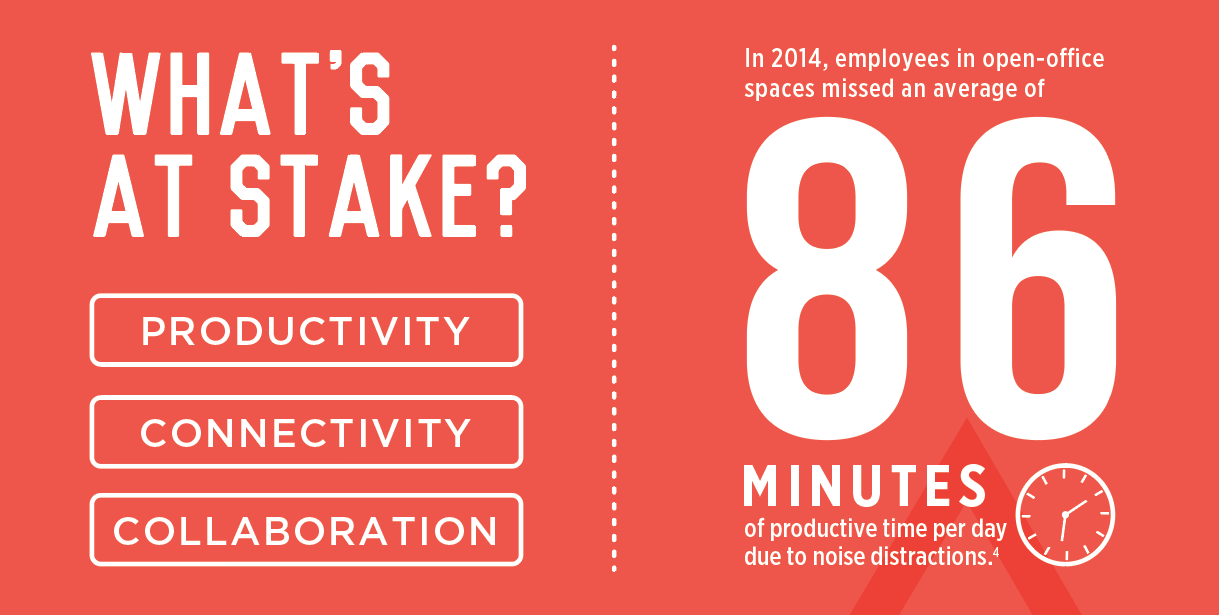The trends toward open office layouts and remote workers show no signs of slowing. While these designs represent a more efficient and cost-effective use of space, compared to the traditional private offices of the past, the associated noise levels and cramped quarters can be distracting. In fact, common interruptions in open office spaces can result in a loss of up to five hours (yes, hours) of productive working time on any given day.

According to a report released by the World Economic Forum, “Telecommuting, co-working spaces, virtual teams, freelancing, and online talent platforms are all on the rise, transcending the physical boundaries of the office or factory floor and redefining the boundary between one’s job and private life in the process.” In addition, telecommuting has proven to lower stress, improve morale, and better suit the needs of modern workers. However, telecommuting isn’t an option for everybody.

As a result, the need for effective collaboration tools and resources will only intensify. That’s why huddle rooms are such a vital amenity for modern workers. Employees need designated, closed-off spaces where they can communicate and collaborate with their remote colleagues. A recent Gallup study found that “employees who have the ability to move to different areas at work are 1.3 times more likely to be engaged than other employees.” That same report determined that “Open office floor plans work best when decision-makers take into account the human needs of workers, the nature of the work being done and the culture of the organization itself. When done right, open offices give employees the freedom to decide how they work best and create an environment where organic brainstorming can occur.”
With the right huddle room design and technology, workers can connect their laptops to the in-room devices with ease, and begin their meetings on time. Beamforming microphones, combined with tools such as acoustic echo cancellation (AEC), ensure that conference call participants on the far end can hear and understand the people in the room clearly. This reduces the potential for miscommunication and allows the conversation to flow more naturally.
Devio has all of that functionality built in. With a Devio solution in place, the days of fumbling with finicky or unfamiliar technology are history. Meeting attendees can connect quickly and dive right into the topic at hand. In addition, Devio’s beamforming microphone knows where everyone is at all times, allowing people to move around the room to write on whiteboards or shift to a more comfortable chair without compromising call quality or intelligibility.
Whether you’re calling into a conference call from a satellite location, or escaping the din of the open office to collaborate with your teammates in peace, Devio is there to support all your huddle room needs.

One Response to Why Huddle Rooms Matter
[…] and other small conference areas that require unified communication (view Biamp’s blog post on Why Huddle Rooms Matter). As a result, the right audio support must be in place to ensure participants can hear and […]
Comments are closed.